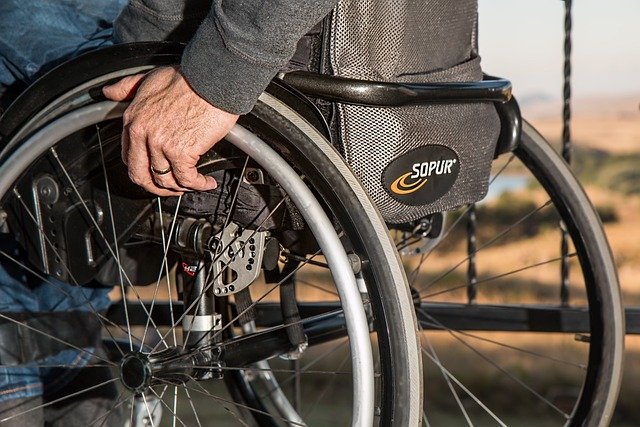New Mobility Aids for Seniors: What’s Being Explored to Support Movement and Comfort
Mobility aids are evolving with improved design, comfort, and smart features. From foldable walkers to power scooters with advanced control, seniors across the U.S. are exploring new tools to support movement, safety, and daily independence both at home and outdoors.

What are the latest features in senior mobility products?
Modern mobility aids are incorporating cutting-edge technology to better serve seniors’ needs. Many new mobility scooters now come equipped with GPS navigation systems, helping users find their way in unfamiliar areas. Some models also feature obstacle detection sensors, automatically slowing or stopping the scooter to prevent collisions. Additionally, adjustable seating with enhanced ergonomics is becoming standard, offering better support for extended periods of use.
Another exciting development is the integration of Bluetooth connectivity in mobility aids. This allows users to pair their devices with smartphones, enabling features like remote locking, battery status monitoring, and even the ability to call for assistance directly from the mobility aid. These smart features not only enhance convenience but also provide an added layer of safety for seniors using mobility products.
How do modern mobility aids improve daily movement for seniors?
The latest mobility aids are designed with a focus on enhancing seniors’ ability to perform daily activities with greater ease and independence. Foldable and lightweight designs in walkers and mobility scooters make it easier for seniors to transport their aids, whether in a car or on public transportation. This increased portability allows for greater freedom of movement and encourages seniors to remain active and engaged in their communities.
Many modern mobility scooters now offer improved maneuverability with tighter turning radiuses and the ability to navigate narrow spaces. This makes it easier for seniors to use their mobility aids in various environments, from crowded shopping centers to their own homes. Some models even feature all-terrain capabilities, allowing users to enjoy outdoor activities and nature trails with greater confidence.
What factors should be considered when choosing between traditional and powered mobility options?
When deciding between traditional mobility aids like canes or walkers and powered options like mobility scooters, several factors come into play. The user’s physical condition and stamina are primary considerations. Those with limited upper body strength or endurance may benefit more from powered options, which require less physical exertion to operate.
The intended use environment is another crucial factor. Traditional aids like canes and walkers are often more suitable for indoor use or short distances, while powered scooters are better for covering longer distances or outdoor use. Additionally, storage space and transportation requirements should be considered, as powered options generally require more room and may be more challenging to transport.
What design upgrades are being implemented in walkers and canes?
Walkers and canes are undergoing significant design improvements to enhance stability, comfort, and ease of use. Many new walkers feature ergonomic handgrips and adjustable height settings to accommodate users of different statures. Some models now include built-in seats, allowing users to rest when needed, and storage compartments for carrying personal items.
In the realm of canes, advances include multi-point bases for increased stability and shock-absorbing tips to reduce impact on joints. Some innovative canes now incorporate LED lights for improved visibility in low-light conditions and fold easily for storage. These upgrades not only improve functionality but also address the aesthetic concerns of seniors who want mobility aids that look less clinical and more stylish.
What innovations are supporting aging-in-place mobility?
Aging-in-place mobility solutions are focusing on creating safer and more accessible home environments. Stairlifts with improved designs and quieter operation are becoming more popular, allowing seniors to navigate multi-level homes with ease. Some models now feature swivel seats and folding rails to maximize space efficiency when not in use.
Smart home integration is another area of innovation supporting aging-in-place mobility. Voice-activated systems can control lighting, open doors, and adjust furniture heights, making it easier for seniors with mobility challenges to interact with their living spaces. Additionally, wearable fall detection devices are becoming more sophisticated, automatically alerting caregivers or emergency services if a fall occurs.
What are the top mobility scooters available for seniors?
When it comes to mobility scooters, several models stand out for their features and reliability. Here’s a comparison of some top options:
| Product Name | Provider | Key Features | Cost Estimation |
|---|---|---|---|
| Pride Go-Go Elite Traveller | Pride Mobility | Lightweight, easy disassembly, 12-mile range | $900 - $1,200 |
| Drive Medical Scout Compact | Drive Medical | Comfortable seat, delta tiller, 15-mile range | $800 - $1,000 |
| Golden Technologies Buzzaround EX | Golden Technologies | 4-wheel stability, LED lighting, 18-mile range | $1,200 - $1,500 |
| Ewheels EW-M34 | Ewheels | All-terrain capability, high weight capacity, 15-mile range | $1,500 - $1,800 |
| Afikim Afiscooter S | Afikim Electric Vehicles | Full suspension, large battery, 28-mile range | $3,000 - $4,000 |
Prices, rates, or cost estimates mentioned in this article are based on the latest available information but may change over time. Independent research is advised before making financial decisions.
In conclusion, the field of mobility aids for seniors is rapidly evolving, with new technologies and designs continually emerging to support independence and improve quality of life. From smart features in mobility scooters to ergonomic upgrades in traditional aids, these innovations are making it easier for seniors to maintain their mobility and engage fully in their daily activities. As research and development in this area continue, we can expect even more advanced and user-friendly mobility solutions in the future.




